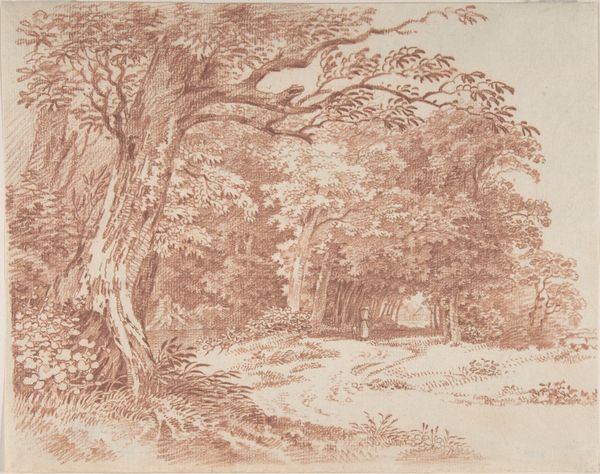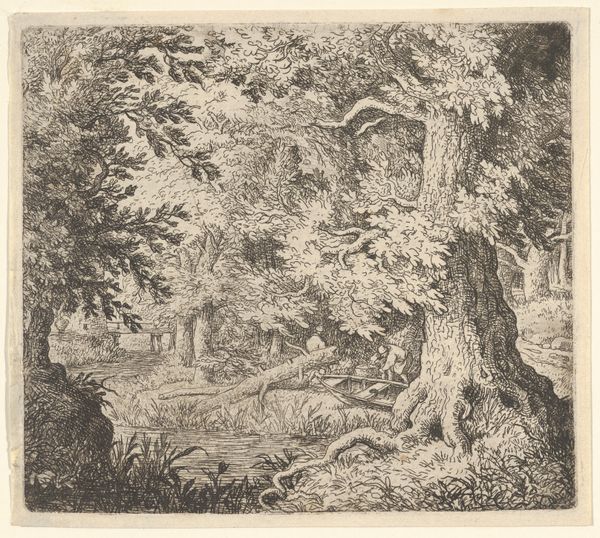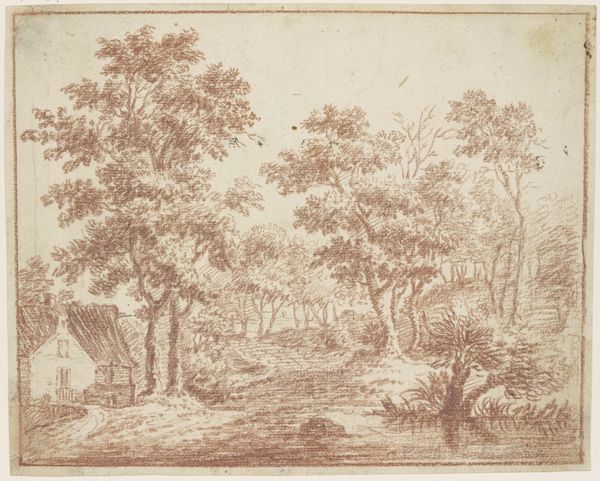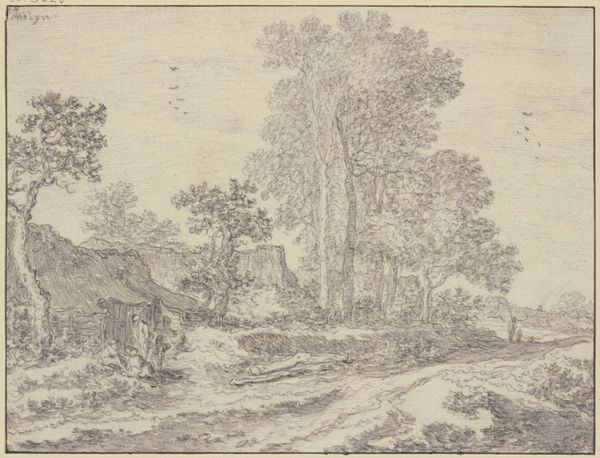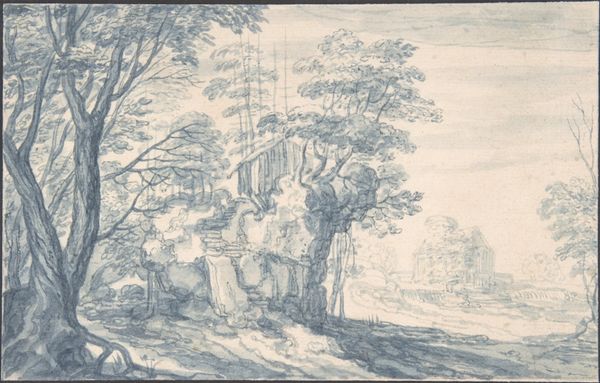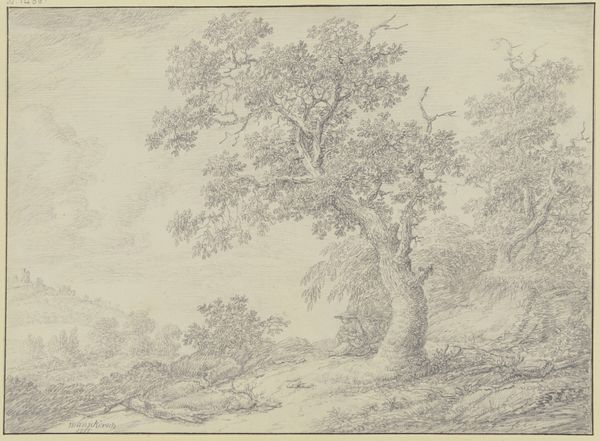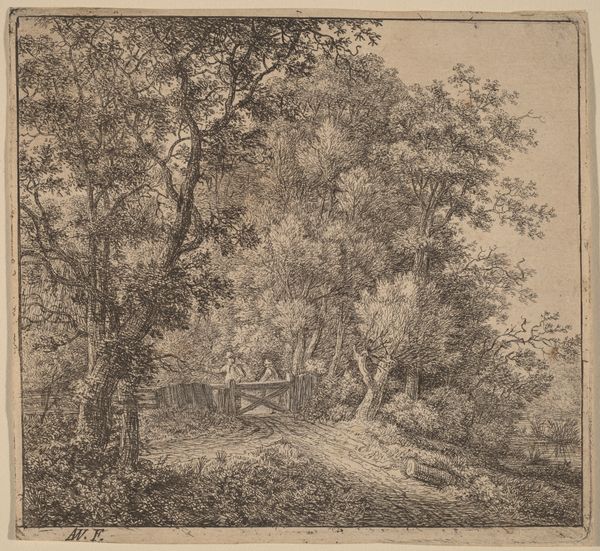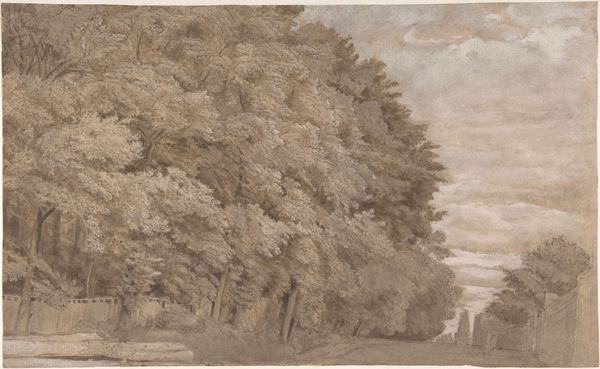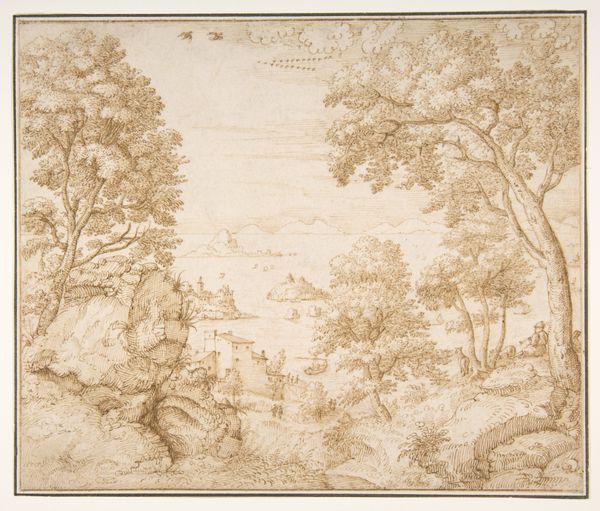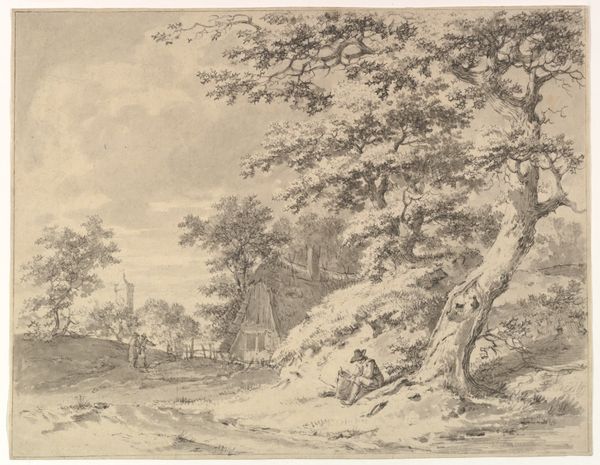
drawing, ink
#
drawing
#
ink painting
#
landscape
#
11_renaissance
#
ink
#
northern-renaissance
Copyright: Public Domain
Editor: So, here we have "Forest in a Swamp," an ink drawing by Gillis van Coninxloo. It's currently housed in the Städel Museum. What strikes me immediately is its somewhat eerie stillness. What can you tell us about it? Curator: It’s fascinating to consider how the idea of “wilderness” was being constructed and consumed at the time this piece was created. Remember that landscape art wasn't simply about depicting scenery. How do you think that artistic depiction of landscapes might reflect larger societal attitudes towards nature, especially the role of swamps? Editor: That's a great question. Swamps aren't often romanticized. Could it be commenting on man versus nature? Curator: Precisely. These depictions often reflected and reinforced socio-political power structures. Think about the act of “discovering” and “mapping” these landscapes, how might that tie into colonial expansion? Do you think this idyllic, yet haunting, portrayal of nature played a role in shaping the public’s understanding and acceptance of such ventures? Editor: That's a perspective I hadn't considered! It shows how art can be a reflection, and a tool, of its time. Thanks for your insights. Curator: Absolutely. Considering art through the lens of history helps us understand not only the artwork, but ourselves.
Comments
No comments
Be the first to comment and join the conversation on the ultimate creative platform.

